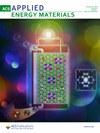印度女性 HPV 感染与宫颈癌随机扰动流行模型研究
IF 5.4
3区 材料科学
Q2 CHEMISTRY, PHYSICAL
引用次数: 0
摘要
本研究引入了一个新的随机 SICR(易感者、感染者、宫颈癌患者和康复者)模型,以说明人乳头瘤病毒(HPV)的感染动态及其对印度女性宫颈癌的影响。我们证明了唯一的正全局解的存在,该解确保了随机有界性和持久性。此外,通过随机消亡参数 R0e 确定了 HPV 消亡的充分条件,表明如果 R0e<1 ,感染就会消亡。相反,当随机阈值 R0s>1 时,利用适当选择的 Lyapunov 函数,通过解的遍历静态分布的存在性和唯一性确定了 HPV 的持久性。此外,印度 2016 年至 2020 年的宫颈癌病例数据也被拟合到模型中,从而提供了适合该地区的参数值。使用正保留截断欧拉-马鲁山方法验证了理论研究结果。此外,根据模型预测和关键参数的敏感性,为印度提出了有效的控制策略。本文章由计算机程序翻译,如有差异,请以英文原文为准。
A study of stochastically perturbed epidemic model of HPV infection and cervical cancer in Indian female population
This study introduces a novel stochastic SICR (susceptible, infected, cervical cancer and recovered) model to illustrate HPV (Human papillomavirus) infection dynamics and its impact on cervical cancer in the female population of India. We prove the existence of a unique positive global solution that ensures stochastic boundedness and permanence. Moreover, sufficient conditions for HPV extinction are established through the stochastic extinction parameter , indicating that the infection will die out if . Conversely, the persistence of HPV is established by the existence and uniqueness of an ergodic stationary distribution of the solution when the stochastic threshold , using the suitable selection of Lyapunov functions. Furthermore, data on cervical cancer cases in India from 2016 to 2020 is fitted to the model, providing parameter values suitable for the region. The theoretical findings are validated using the Positive-Preserving Truncated Euler–Maruyama method. Additionally, effective control strategies for India are suggested based on model predictions and sensitivity of key parameters.
求助全文
通过发布文献求助,成功后即可免费获取论文全文。
去求助
来源期刊

ACS Applied Energy Materials
Materials Science-Materials Chemistry
CiteScore
10.30
自引率
6.20%
发文量
1368
期刊介绍:
ACS Applied Energy Materials is an interdisciplinary journal publishing original research covering all aspects of materials, engineering, chemistry, physics and biology relevant to energy conversion and storage. The journal is devoted to reports of new and original experimental and theoretical research of an applied nature that integrate knowledge in the areas of materials, engineering, physics, bioscience, and chemistry into important energy applications.
 求助内容:
求助内容: 应助结果提醒方式:
应助结果提醒方式:


